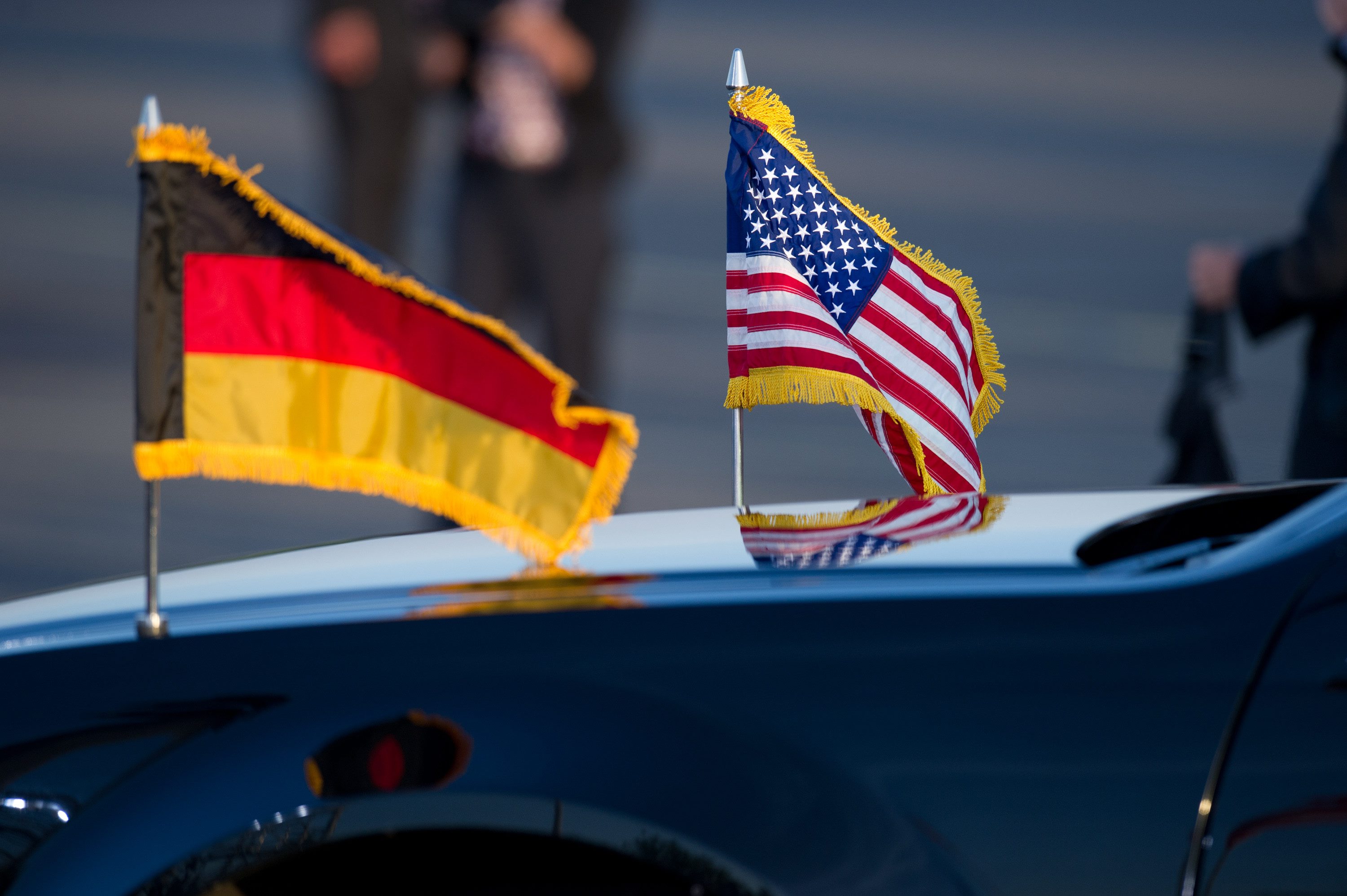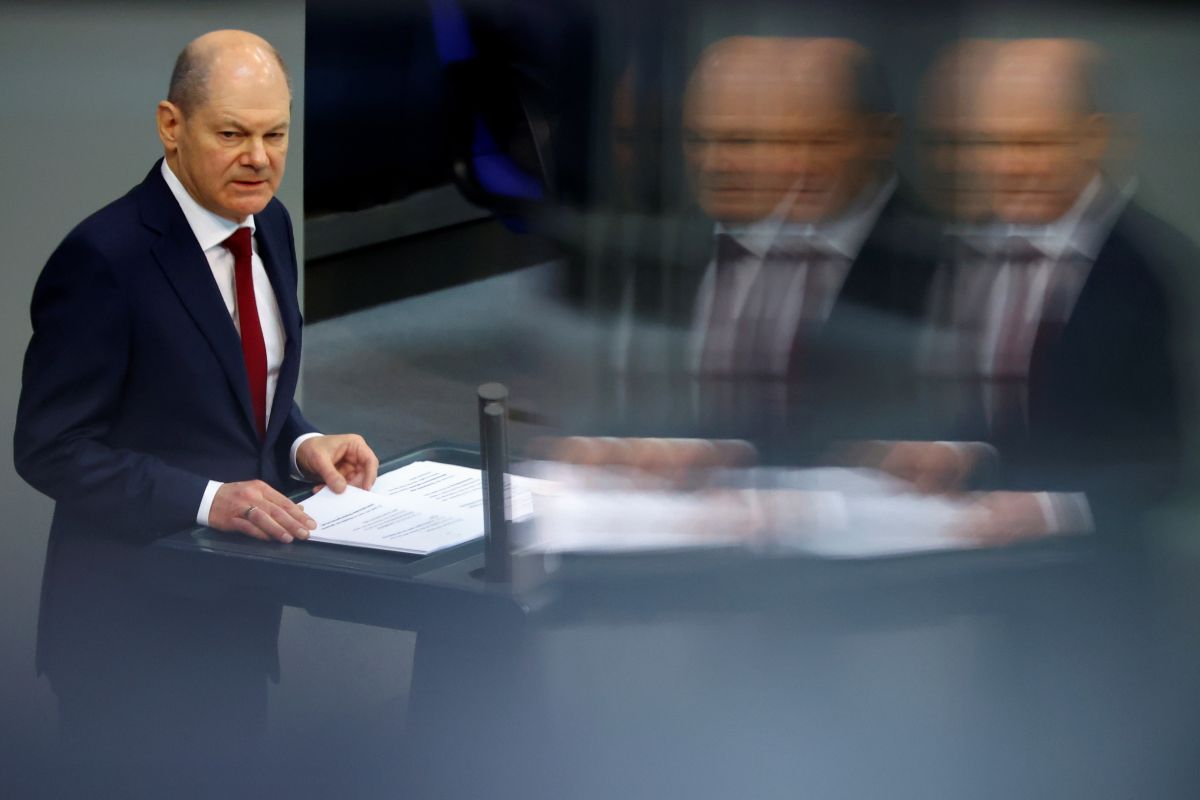Security Issues Still Key in U.S.-German Cooperation
Germany’s hesitation regarding military aid for Ukraine and its different perception of cooperation with China make it difficult to rebuild the strategic partnership with the U.S., weakened by the Trump presidency. Differences of interest will not degrade Germany’s position as the key military and political partner for the U.S. in Europe in the near future. For other regional American allies, including Poland, it is important that in the short term U.S.-German differences of opinion do not disrupt aid to Ukraine and, in the long term, do not result in a reduction in the presence of U.S. troops in Europe.
.jpg) POOL / Reuters / Forum
POOL / Reuters / Forum
For Germany, the United States is the most important non-European political partner, while Germany is one of the most important European allies for the U.S. The two countries’ military, political, and economic ties date back to the beginning of the Cold War. The Biden administration tried to correct the policy of the previous U.S. authorities, which was expressed by, among others, initial consent to complete the construction of the Nord Stream 2 gas pipeline by waiving part of the U.S. sanctions on the project. The coming to power of the SPD-Greens-FDP coalition did not fundamentally change the pro-Atlantic course in German foreign policy, as the coalition agreement emphasised that the transatlantic bond is the basis of Germany’s security. The German government sees the EU’s efforts to improve its defences as a complement to the transatlantic system, unlike the French and their ambitions for European “strategic autonomy”, generally understood as reducing dependence on the U.S. and others.
Military Cooperation and Assistance to Ukraine
About 38,500 U.S. soldiers are stationed in Germany, playing the key role in quick-response plans and strengthening NATO’s Eastern Flank. After the Russian full-scale invasion of Ukraine last year, the U.S. sent two additional armoured brigades to Germany, along with rocket artillery, and moved from Germany, among others, two Patriot batteries to Poland, attack helicopters to the Baltic States, and additional troops to Bulgaria, Romania and Hungary. In addition, Germany participates in the nuclear-sharing programme of American B61 bombs, which is an element of NATO’s nuclear deterrent policy. Chancellor Olaf Scholz’s government ordered F-35 aircraft to keep Germany as a participant in the next-generation fighter project. The American arms industry also benefits from the German government’s decision to allocate €100 billion to the Bundeswehr. The first major contract from these funds is the purchase of American CH-47 Chinook transport helicopters. The German authorities have allocated €6.5 billion for this purpose, but the final value of the contract may turn out to be higher.
In response to the Russian invasion, the U.S. increased its military support to Ukraine, sending for the first time Stinger anti-aircraft systems, among other weaponry. The German government, though, adopted the tactic of waiting for its allies to take steps, especially the U.S. Scholz’s resistance to arms deliveries results from the pacifism deeply rooted in German society, the fear of Russian escalation, along with the desire to play the role of a mediator in the future. Representatives of the German government, explaining their reluctance to deliver more types of weapons, referred to, as it turned out, non-existent arrangements with NATO allies. During the last year of support for Ukraine, the U.S. provided it with newer and heavier types of weapons, including howitzers, HIMARS artillery systems, and hundreds of armoured vehicles. At the same time, the U.S. put pressure on Germany to expand the scope of its support. As a result, they jointly delivered infantry fighting vehicles (U.S. provided Bradleys and Strykers; Germany, Marders) and one battery each of the Patriot system (which together with the Netherlands comprised three batteries in total). Ultimately, the joint decision was made to transfer Western-made tanks (Germany, Leopard 1 and 2; USA, M1A1 Abrams). The U.S. authorities agreed as a result of Germany’s lack of political readiness to independently transfer the tanks. This solution is advantageous from Scholz’s point of view, in particular in domestic policy because it enables him to emphasise the effectiveness of following a cautious policy of helping Ukraine only to the extent required by Germany’s allies.
Energy Security in Bilateral Relations
The Russian invasion of Ukraine forced the Scholz government to make far-reaching changes in the energy sector. Germany supported the EU embargo on Russian coal and oil, despite initial concerns about its impact on the economy. The federal government has taken a number of measures to reduce dependence on Russian gas imports and the construction of LNG terminals has become a top priority. The first delivery of LNG from the U.S., contracted by Uniper, reached Germany in January. Last year, the German companies RWE and EnBW concluded long-term contracts (for 15 and 20 years, respectively) for LNG supplies from the U.S. In the case of RWE, the planned start of implementation is 2027 when the construction of the terminal at Port Arthur, Texas, is to be completed. The annual volume of LNG supplies will then amount to 5.7 billion m3 (bcm; for comparison, in 2022, total gas imports to Germany amounted to 85 bcm). It is expected that the U.S. will be the most important exporter of LNG to Germany in the coming years. Cooperation with the U.S. is easier for public opinion to accept and does not burden the image of Germany as much as searching for new suppliers in Arab countries.
Threats in Economic and Technological Cooperation with China
Since 2017, the U.S. has perceived China as the most serious political, economic, and military challenge today. Biden maintained Trump’s approach in this respect, signalling, however, the possibility of cooperation with China in selected fields (e.g., climate protection) and increasing the coordination of policy towards China with partners. As a result, the U.S. joined the AUKUS and IPEF and is holding consultations on China with the EU. Striving to increase the competitiveness of its economy and reduce dependence on China, the U.S. adopted the CHIPS and Science Act and the Inflation Reduction Act. Already in 2011, the U.S. blocked space cooperation with China, and in recent months has banned American technology companies from building new facilities in China, importing Chinese ICT technologies or exporting technologies, chips, and machines for their production to dozens of Chinese companies. There is also a national political debate about the threats of the social media platform Tik Tok.
Germany is trying to pursue a multi-pronged policy towards China, which the government of Chancellor Scholz, like the European Commission, considers a partner, competitor, and in some aspects also a systemic rival. China has been Germany’s most important trading partner for years and it ranks first among import sources and fourth as an export destination. For this reason, Germany will not be willing to sever trade ties with China, even if tensions between China and the U.S. increase. The tactic of balancing economic cooperation with efforts to reduce unilateral dependence on imports of Chinese products and raw materials (especially rare earth elements) was confirmed by Chancellor Scholz’s visit to Beijing in November 2022. Unlike the unified position of Democrats and Republicans, disputes in Germany about the scope of limiting relations with China cause tensions within the ruling coalition. The Greens favour a tougher policy towards China, and some in the SPD and FDP point to the need to mitigate disputes with China.
These tensions, the lack of appropriate legal regulations, the excessive desire of the heads of corporations to maximise profits regardless of the accompanying risk, and Chinese lobbying mean that the German digital infrastructure remains at risk of Chinese infiltration. An example is the decision by Deutsche Bahn from December 2022 to cooperate with Huawei in the digitisation of railway infrastructure management. Another risk factor is the dominance of this Chinese concern in the creation of the 5G network in Germany (Huawei accounts for as much as 59% of the tech involved). The reluctance of Germany and the EU to the U.S. demands to limit economic relations with China remains a point of contention in relations with the American authorities.
Conclusions
The role of Germany as one of the main American allies in Europe has not changed under Biden’s presidency. Regardless of different economic interests, in the face of the war in Ukraine and the growing tension around Taiwan, Germany emphasises the importance of transatlantic ties and cooperation, appreciating to a greater extent than France the role of the U.S. in deterring Russia and China.
Due to fears of an economic collapse in the event of possible aggression against Taiwan, one of the goals of German diplomacy remains to warn China against the consequences of such an escalation, as was emphasised by Foreign Minister Annalena Baerbock during her last visit to Beijing. With the growing differences in the approaches of Germany and France to transatlantic policy and global challenges, potentially hindering U.S. policy coordination at the bilateral level, the Americans may seek to expand cooperation at the U.S.-EU level, especially with the European Commission and the G7 group.
Regardless of the tensions, Germany will strive to maintain American involvement in Europe, which indicates a common interest with Poland and the need for the two Member States to cooperate. However, it will be in Poland’s interest to convince its allies in the transatlantic community to take into greater account the expressed concerns about Russia and suggestions regarding Alliance policy towards Eastern European states. In addition, from Poland’s point of view, it is desirable that potential U.S.-German tensions over China do not weaken the assistance to Ukraine and common position towards Russia.






